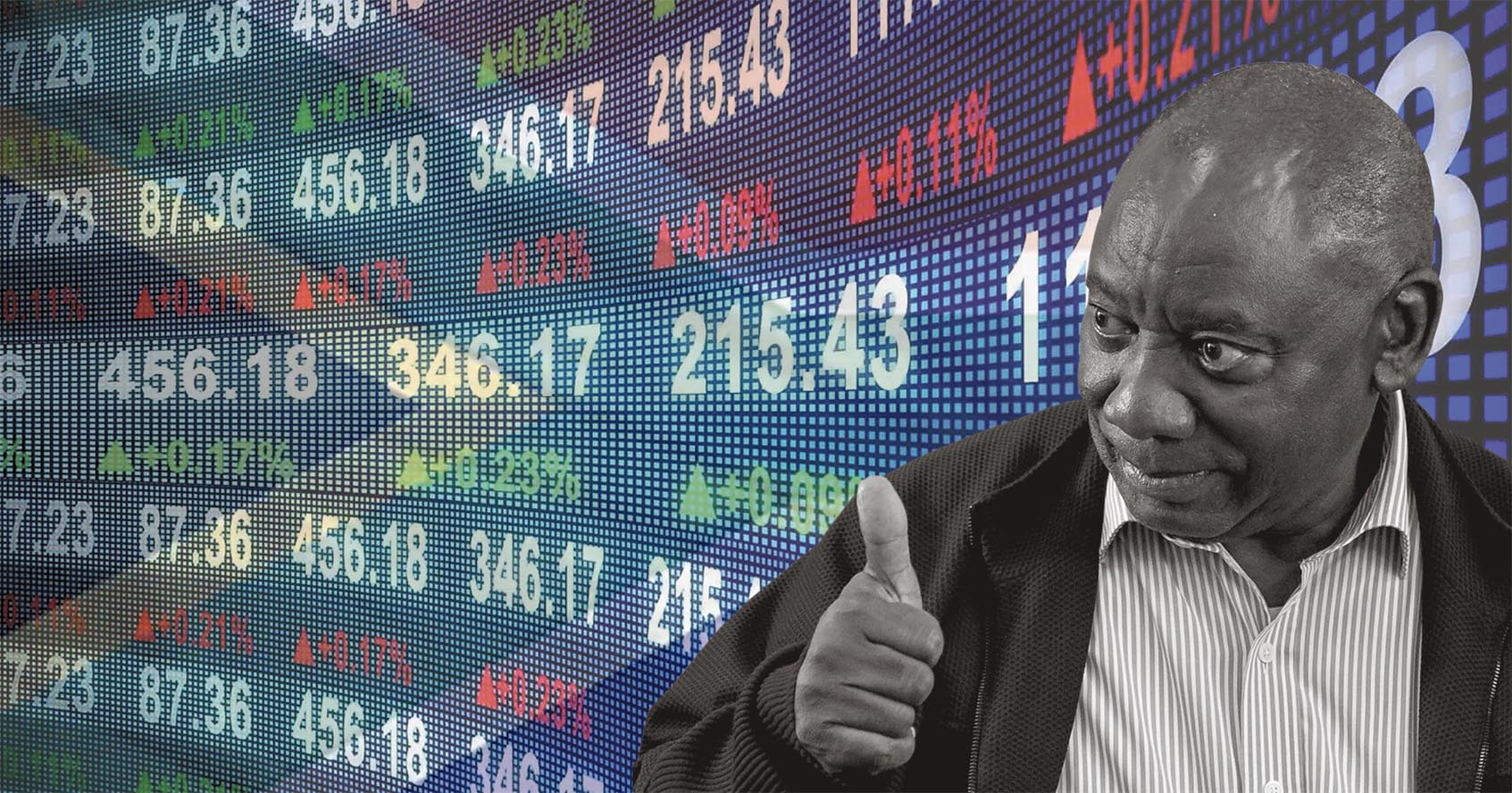Despite a surprisingly successful election period and outcome, the South African market remains substantially undervalued – the JSE is about 40% lower than its most recent Ramaphoria high in 2018. Everything seems to be “on hold”, including interest rates, in the midst of “cautious optimism”. Why?
South Africans might have had every right to expect a big rise in their investment portfolios: a great political outcome, better interest rate prospects around the world, all racked up against an undervalued market. Yet the gains so far have been modest. What exactly is the market waiting for?
What is more, companies are still leaving the JSE, interest rates remain on hold, the South African Reserve Bank (SARB) announced on Thursday, 18 July, and disappointing retail sales data were released this week.
To rub salt in the wound, it’s not as though South Africa is starting from a high base. Its stock market is trading at about 12 times annual earnings on average, otherwise known as a 12 price-to-earnings ratio. And this is after investment house 10X calculates that about R1-trillion has left the stock market since 2016 and R1-trillion has left the bond market since 2017.
You have to ask when, if ever, are these mainly foreign investors coming back? And if a successful election and the very quick creation of a government of national unity (GNU) are not enough, what will be?
Hannes van den Berg, fund manager for investment house Ninety One, says the “cautious optimism” meme has really captured South Africa’s markets on a short-term perspective, but there are some underlying changes building up.
“It’s a bit like a stretched elastic band: you know it will return to the norm at some point, you just don’t know when,” he said.
One of those turning-point signals will be interest rates, and though the Monetary Policy Committee (MPC) of the Reserve Bank decided to keep rates unchanged, with the repo rate at 8.25% and the prime rate at 11.75%, it was clear that a cut is close now.
Economist commentary on the decision was almost unanimous: the discussion about the decision – and that two of the MPC committee members had voted for a cut this month already – suggest a faster lowering of the rates than previously anticipated. A small cut in September is now expected, even before the US Fed’s decision, which might be later the same day.
“The burning question the market is now toying with is whether the MPC, given its new composition and the hawkish leadership of Lesetja Kganyago, could take the first step in cutting rates at its September meeting,” said Vivienne Taberer, investment director at Ninety One.
“Given the more conducive South African domestic backdrop, our view is that any further softening of US data and Fed rhetoric ahead of its own September meeting will be enough to tip the balance towards a SARB cut.”
This would be welcome, particularly in light of the muted response that the markets have given to the advent of the GNU.
Investment news and analysis website Citywire quoted Chris Eddy, 10X head of multi-asset funds, at a seminar pointing out just how astounding the difference has been between the market’s reaction to Ramaphoria and its reaction to the creation of the GNU.
Comparing the Ramaphoria rally with this year’s GNU rally, four measures stand out, Eddy said: the JSE FTSE All Share Index gained 3.6% compared with 1.6% during the GNU; the FTSE/JSE SA Financial 15 Index gained 17.4% compared with 10.4%; the FTSE/JSE All Bond Government Index gained 8.8% compared with 4.4%; and the rand strengthened 15% against the dollar during Ramaphoria and only 0.5% after the GNU.
It’s clear that the markets are being much more cautious this time round, possibly precisely because Ramaphoria petered out so soon after President Cyril Ramaphosa’s inauguration.
Expectations were exceptionally high when he came into office in 2018. You can see that the JSE equity market was sitting on 19 times earnings – close to a 20% premium to the market average. Current valuations are roughly at a 40% discount to that.
Van den Berg points out that there have been some immediate pops. South Africa’s government bonds compared with US bonds have improved notably, and some sectors in the JSE too, notably the retail sector. But the average has been held down by mining, for example.
There are also some immediate factors to include, such as the introduction of the two-pot pension system. It is expected that about R100-billion could be injected into the economy as a result of a portion of pensions becoming immediately available in terms of the system.
There are also global currencies and politics to consider: the increasing probability of a Donald Trump presidency is having a varied effect on global markets and the US dollar.
But, longer term, the prospects look more encouraging. “South Africa is struggling to emerge from its recent trend of sluggish economic activity, with stronger out-turns in the retail sector being offset by weakness in industry. Nevertheless, we think momentum will build over the coming quarters on the back of the better electricity conditions and possible rate cuts,” said David Omojomolo, Africa economist with Capital Economics, in a note to clients.
Cautious optimism remains the order of the day. DM
This story first appeared in our weekly Daily Maverick 168 newspaper, which is available countrywide for R35.






